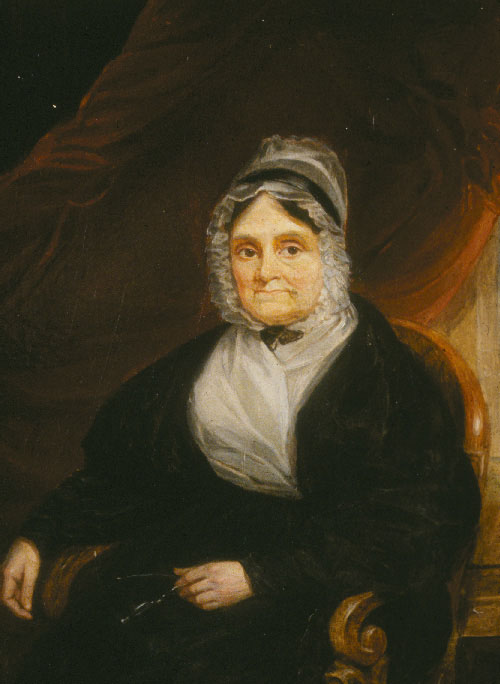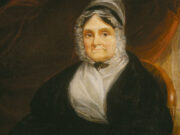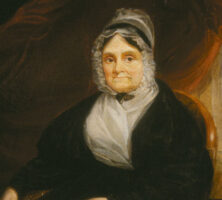One of Georgia’s most prominent citizens, Edward Telfair served three terms as Georgia’s governor in the late 1700s. He was the first governor to serve under the Georgia Constitution of 1789.
Early Life
Edward Telfair was one of the many Scotsmen who settled in Georgia during the mid-eighteenth century. He was born in 1735 on his family’s ancestral estate in southwestern Scotland near the village of Kirkcudbright. He received only an elementary school education before taking a job with a firm of merchants. In 1758, when he was in his early twenties, he set sail for the English colonies in America with his brother William and a cousin. Telfair first settled in Virginia, where he represented the Scottish firm that employed him, then moved to North Carolina, and finally resettled in Georgia, where he joined William in Savannah in 1766.
Telfair formed a partnership with his brother and Basil Cowper, another Scotsman, and became one of the most successful merchants in colonial Georgia. He also acquired substantial holdings of land in Christ Church Parish (later Chatham County) and elsewhere in the Savannah River basin. In time, he became the principal owner of land in Burke County near the present town of Waynesboro. He was a planter as well as a merchant, and as such he owned many enslaved people. He also operated a water-driven sawmill in Burke County, which was supplied from his vast holdings of timberland.

Telfair married Sarah Gibbons in 1774. Together they had six children—three sons and three daughters. Upon her death, their daughter Mary Telfair bequeathed the Telfair family home on Savannah’s St. James Square to the Georgia Historical Society. This gift eventually became Telfair Museums, the oldest public art museum in the South.
Political Career
Two years after his arrival in Savannah, Telfair entered the political arena of the Georgia colony. In 1768 he was elected to the Commons House of Assembly as a delegate from St. Paul Parish, where he owned land. He became involved in the Revolutionary struggle (1775-83) against England’s King George III and joined the Sons of Liberty, a group of artisans and shopkeepers who protested the Stamp Act and other royal declarations. In May 1775, when news of the New England battles of Lexington and Concord reached Savannah, Telfair joined Joseph Habersham, Noble W. Jones, John Milledge, and other Liberty Boys in breaking into the royal magazine and making off with 600 pounds of powder. Telfair was named in June 1775 to the Council of Safety, a body formed to supervise the enforcement of boycotts and to seek solutions to the growing crisis between the colony and the British crown.
Telfair was elected to the Continental Congress in 1778 and was a member until 1783. While in Congress, he was one of Georgia’s signers of the Articles of Confederation. In July 1780 a bill of attainder named certain rebels against the Crown as guilty of high treason and barred them from holding office in Georgia. Telfair, as a member of the rebel Congress, was among those named, though that did not stop him from seeking office.
In 1786 the Georgia legislature elected Telfair to the office of governor for a one-year term. During his term, he resolved a dispute with the officials of Chatham County over the removal of books and records, belonging to the secretary of state, from Savannah to the new state capital in Augusta. Using the financial acumen that had made him a wealthy man, the new governor also set about putting the state’s financial affairs in order. In 1786 Telfair urged the legislature to take remedial action to ease the pressure on the treasury occasioned by the state’s indebtedness of nearly $1 million. The solution was the issuance of paper bills of credit that would serve as legal tender. Much of the governor’s energy was spent in warding off a threatened war with the Creek Indians and in attempting to settle a border dispute with South Carolina.
In 1787 Telfair was succeeded as governor by George Mathews, who had served with distinction in the American cause as an officer of the Virginia line. Telfair, however, continued to be active in public affairs. He took part in the convention that met in Augusta on Christmas Day 1787 to consider the new U.S. Constitution that had been signed in Philadelphia the preceding September. Along with the other delegates, he voted in favor of its ratification.
In May 1791, shortly after Telfair took office for a second term as governor, U.S. president George Washington visited Georgia. As the president and his entourage approached Augusta, Telfair and most of the principal men of the city officially greeted the president on the road outside of town and escorted him to the capital. That afternoon, Telfair and his wife entertained Washington at an elegant dinner held at the Grove, their Augusta residence. Sarah Telfair was also the hostess of a ball at Richmond Academy later that evening, which the president attended.
During his second and third terms as governor, which lasted from 1790 to 1793, Telfair was concerned with balancing the rights of the states against the powers of the new federal government, with judicial reform, and with the level of taxation. One of his most vexing problems was the continuing conflict between Georgia’s frontier settlements and the Creek Indians.
A significant chapter in the history of Telfair’s governorship involved the question of the sovereign immunity of a state from lawsuits by citizens of other states and foreign nations. A citizen of South Carolina had sued the state of Georgia in federal court, and over the objection of Telfair and the state legislature, the U.S. Supreme Court upheld the court’s jurisdiction. The outrage of citizens in Georgia and other states gave rise to the 1794 proposal, and subsequent ratification, in Congress of the Eleventh Amendment to the U.S. Constitution, which prohibits citizens of one state, or of a foreign country, from suing the government of another state.
Telfair died on September 17, 1807, at his Savannah townhouse. His body was taken to Savannah’s Colonial Cemetery, where a religious service was held and military honors were performed. He was buried in the family vault at his Sharon plantation near Savannah. In the year of Telfair’s death, Telfair County was created and named in his honor. Years later, his remains would be removed to Bonaventure Cemetery in Savannah, where in 1860 his surviving daughters erected a memorial to their father’s memory.





